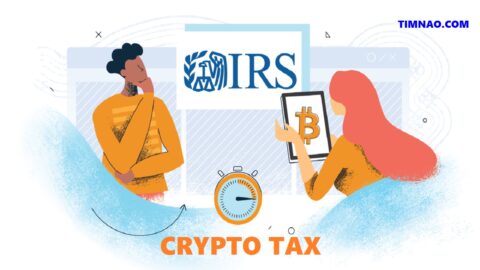Bitcoin Investing for Beginners: Your Amazing Journey to Understanding Digital Gold in 2025
Bitcoin Investing for Beginners often starts with a mix of curiosity, excitement, and maybe a little confusion. You’ve likely heard the buzz – tales of early investors striking digital gold, news flashes about skyrocketing prices, or perhaps whispers about a revolutionary new form of money. But what is Bitcoin, really? And how can someone new to this world start investing?
Forget the complex jargon and intimidating charts for a moment. Think of this article as your friendly guide, your first step into the potentially rewarding world of Bitcoin investing for beginners. We’ll break down the essentials, explore why Bitcoin has captured the world’s attention, guide you through getting started, discuss strategies, and look at what the future might hold – all based on foundational knowledge and updated with the latest insights for 2025.
This isn’t just about investing; it’s about understanding a technology that could reshape finance as we know it. Ready to unlock the door to digital gold? Let’s begin!
🤔 What Exactly is This “Bitcoin” Thing?
Before diving into Bitcoin investing for beginners, let’s get grounded in the basics. You might hear terms like “cryptocurrency” or “digital gold,” but what does it all mean?
The Birth of Digital Currency: Bitcoin Explained
Imagine a world reeling from a massive financial crisis in 2008. Trust in traditional banks and government systems was shaken. It was in this climate, in 2009, that a mysterious person (or group) named Satoshi Nakamoto introduced Bitcoin.
Bitcoin wasn’t just another online payment system; it was the first decentralized digital currency. What does “decentralized” mean? It means no single bank, government, or company controls it. Instead, it runs on a global network of computers, operating on a peer-to-peer basis. Think of it like a digital version of cash you can send directly to anyone, anywhere in the world, without needing a middleman.
Key Characteristics You Should Know:
- Decentralized: No central authority controls Bitcoin. Power is distributed across its users.
- Limited Supply: There will only ever be 21 million Bitcoins created. This scarcity is why it’s often called “digital gold”. Unlike regular currencies that governments can print more of (potentially causing inflation), Bitcoin’s supply is fixed.
- Divisible: You don’t need to buy a whole Bitcoin (which can be expensive!). It can be divided into much smaller units called Satoshis (100 million Satoshis = 1 Bitcoin).
- Portable & Global: Send Bitcoin across borders easily and often with lower fees and faster speeds than traditional international bank transfers.
Bitcoin’s original goal was to create a secure, transparent, and efficient way to exchange value online, bypassing the traditional financial gatekeepers.
Understanding the Magic: Blockchain Technology ⛓️
How does Bitcoin work without a bank verifying everything? The answer lies in Blockchain.
Imagine a shared, digital notebook that everyone on the Bitcoin network has a copy of. When a Bitcoin transaction happens, it gets recorded in this notebook. These records are bundled together into “blocks.” Each new block is linked to the previous one using complex cryptography (like a digital seal), forming a chain.
Why is this revolutionary?
- Transparency: Most blockchain transactions are public (though the identities behind wallet addresses are pseudonymous). Anyone can view the transaction history.
- Security: Because the ledger is distributed across thousands of computers, changing a past transaction is practically impossible. You’d need to hack thousands of computers simultaneously and redo all the cryptographic work for subsequent blocks. This makes the blockchain incredibly secure and tamper-proof.
- No Middleman: The network itself verifies transactions through a process called “mining” (more on that later), eliminating the need for banks or payment processors.
Blockchain technology isn’t just for Bitcoin; it’s being explored for everything from secure voting systems to tracking goods in supply chains.
How Bitcoin Transactions Work (Simplified)
Let’s say you want to send Bitcoin to a friend:
- Wallet & Keys: You use your Bitcoin “wallet” (an app or hardware device). Each wallet has a public key (like your bank account number, which you share to receive funds) and a private key (like your secret PIN or password, which proves you own the Bitcoin and authorizes sending). Never share your private key!
- Initiate: You enter your friend’s public wallet address and the amount.
- Broadcast: Your wallet software broadcasts the transaction details to the Bitcoin network.
- Mining & Verification: Special participants called “miners” use powerful computers to solve complex mathematical puzzles. The first miner to solve the puzzle related to a batch of transactions gets to add the next “block” to the blockchain. This process verifies the transactions within that block.
- Confirmation: Once the block is added, your transaction is confirmed. More blocks added after yours increase the confirmation count and security.
- Reward: Miners are rewarded with newly created Bitcoin and transaction fees for their work. This is how new Bitcoins enter circulation.
This process, called “Proof-of-Work”, is what secures the network and makes Bitcoin function without a central authority.
Bitcoin vs. Traditional Banking: Key Differences 🏦
| Feature | Bitcoin | Traditional Banking |
| Control | Decentralized; controlled by the network/users | Centralized; controlled by banks and governments |
| Accessibility | Open to anyone with internet access | Often requires ID, address proof, credit history, physical branch access |
| Transactions | Peer-to-peer; faster confirmations (minutes to hours) | Requires intermediaries; can take days, especially internationally |
| Fees | Generally lower network fees, vary by congestion | Can have high fees for transfers (especially international), account maintenance |
| Transparency | Public ledger (pseudonymous) | Private; transactions known only to bank and involved parties |
| Privacy | Pseudonymous (wallet addresses, not names) | Requires extensive personal information (KYC/AML) |
| Supply | Fixed limit (21 million BTC) | Can be increased by governments (potential inflation) |
| User Autonomy | Full control over funds (if you control private keys) | Subject to bank rules, limits, potential freezes/seizures |
| Volatility | High price fluctuations | Generally stable (fiat currencies) |
| Scalability | Lower transactions per second currently; improving (e.g., Lightning) | High transaction throughput (e.g., VISA) |
While Bitcoin offers compelling advantages, it also faces challenges like price volatility and the ongoing development of scaling solutions.
📈 Why Consider Bitcoin Investing for Beginners?
Now that you understand the basics, why are people excited about Bitcoin investing for beginners? It’s more than just hype.
Digital Gold: A Store of Value? 🏆
One of Bitcoin’s most compelling narratives is its potential as a “store of value,” similar to physical gold. Why?
- Scarcity: With only 21 million coins ever to be created, its supply is finite, unlike traditional currencies that can be printed indefinitely. This inherent scarcity could potentially protect against inflation over the long term. In countries experiencing hyperinflation like Venezuela or Zimbabwe, citizens have turned to Bitcoin to preserve their savings when local currencies collapsed.
- Durability & Portability: Bitcoin exists digitally and can be stored and transferred globally with relative ease.
- Decentralization: Its value isn’t tied to any single government’s economic policy or stability.
While its price is currently volatile, many long-term investors (“HODLers”) believe its scarcity and growing adoption will lead to significant value appreciation over time.
Potential for High Returns (and High Risk!) 🎢
Let’s be clear: Bitcoin investing for beginners comes with risks. The price can swing dramatically. However, this volatility also presents the potential for significant returns, which attracts many investors. Early adopters saw astronomical gains. While past performance doesn’t guarantee future results, the potential for growth, driven by increasing adoption and technological development, remains a key attraction. Remember the golden rule: Never invest more than you can afford to lose.
Financial Freedom & Empowerment 💪
Bitcoin offers a degree of financial autonomy not possible with traditional systems. You control your private keys, you control your Bitcoin. This resonates with those who distrust centralized institutions or live in regions with unstable governments or limited banking access. Bitcoin provides a way to participate in the global economy, send remittances cheaply, and protect assets from potential seizure or hyperinflation. This empowerment is a core part of Bitcoin’s philosophy.
Diversification 🧺
Adding Bitcoin to a traditional investment portfolio (stocks, bonds) can offer diversification benefits. Historically, Bitcoin’s price movements haven’t always correlated strongly with traditional markets. This means that when stocks go down, Bitcoin might go up, stay flat, or go down less (or more!), potentially helping to smooth out overall portfolio returns. However, correlations can change, and it’s still considered a high-risk asset.
🚀 Getting Your Feet Wet – How to Start Bitcoin Investing
Ready to take the plunge? Here’s a step-by-step guide for Bitcoin investing for beginners.
Step 1: Choose a Cryptocurrency Exchange 🏦
An exchange is a platform where you can buy, sell, and trade cryptocurrencies. Think of it like an online stock brokerage, but for digital assets. When choosing an exchange, consider:
- Reputation & Security: Look for established exchanges with strong security measures (like MFA), good user reviews, and insurance for funds held online. Recent hacks highlight the importance of security; for example, the massive Bybit hack in early 2025 serves as a stark reminder.
- Fees: Compare trading fees, deposit/withdrawal fees, and any hidden costs.
- Ease of Use: Pick a platform with an interface you find intuitive, especially as a beginner.
- Available Cryptocurrencies: Ensure they offer Bitcoin and any other cryptos you might be interested in.
- Payment Methods: Check if they accept your preferred payment method (bank transfer, debit card, etc.).
- Regulatory Compliance: Choose exchanges that comply with regulations like KYC (Know Your Customer) and AML (Anti-Money Laundering) in your region. This adds a layer of legitimacy and security.
Some popular exchanges (do your own research!) include Coinbase, Binance, Kraken, and Gemini.
Step 2: Set Up Your Account & Verify Your Identity 🆔
Once you’ve chosen an exchange, you’ll need to create an account. This usually involves providing basic information and then verifying your identity (KYC). You’ll likely need to submit a government-issued ID and possibly proof of address. While it seems intrusive, this is a standard security measure to prevent fraud and comply with regulations.
Security Tip: Use a strong, unique password for your exchange account and enable Two-Factor Authentication (2FA or MFA) immediately!
Step 3: Choose a Bitcoin Wallet 👛
While you can leave your Bitcoin on the exchange, it’s generally considered safer to move it to a personal wallet where you control the private keys. Remember: “Not your keys, not your coins.”
There are different types of wallets:
- Software Wallets (Hot Wallets): Apps on your phone or computer (e.g., Exodus, Trust Wallet, Electrum).
- Pros: Convenient for frequent transactions, often free.
- Cons: Connected to the internet, making them more vulnerable to hacking or malware. Best for smaller amounts.
- Hardware Wallets (Cold Wallets): Physical devices (like USB drives) that store your private keys offline (e.g., Ledger, Trezor).
- Pros: Most secure option for storing significant amounts or long-term holdings. Immune to online threats when disconnected.
- Cons: Cost money, less convenient for quick transactions.
- Paper Wallets: Printing your public and private keys on paper.
- Pros: Completely offline, immune to hacking.
- Cons: Vulnerable to physical damage (fire, water), loss, or theft. Requires careful handling and secure storage. Less common now.
Which wallet is right for you?
For beginners making small investments, a reputable software wallet might suffice initially. If you plan to invest a significant amount or hold long-term (HODL), investing in a hardware wallet is highly recommended.
Setting up your wallet: Follow the wallet provider’s instructions carefully. Crucially, you’ll be given a Recovery Phrase (also called a seed phrase) – typically 12 or 24 words.
- WRITE IT DOWN: Record it accurately on paper.
- STORE IT SECURELY: Keep it in a safe place (or multiple safe places) where only you can find it. Consider fireproof/waterproof storage.
- NEVER STORE IT DIGITALLY: Don’t save it on your computer, phone, email, or cloud storage. Don’t take a photo of it.
- NEVER SHARE IT: Anyone with your recovery phrase can access your crypto.
This recovery phrase is your ultimate backup if your wallet device is lost, stolen, or damaged. Guard it with your life!
Step 4: Fund Your Exchange Account 💵
Deposit traditional currency (like USD, EUR, etc.) into your exchange account using your chosen payment method (bank transfer, card).
Step 5: Buy Bitcoin (BTC) 🛒
Navigate to the trading section of the exchange. You’ll likely see options like:
- Market Order: Buys Bitcoin immediately at the best available current price. Simple for beginners.
- Limit Order: Lets you set a specific price at which you want to buy. Your order only executes if the market price reaches your target price.
Enter the amount you want to buy (either in fiat currency or BTC amount) and confirm the purchase. Congratulations, you own Bitcoin!
Step 6: Transfer Bitcoin to Your Personal Wallet (Recommended) 🔒
For maximum security, transfer your newly purchased Bitcoin from the exchange to your personal wallet (the software or hardware wallet you set up earlier).
- Find the ‘Withdraw’ or ‘Send’ option on the exchange.
- Get your ‘Receive’ or ‘Deposit’ address from your personal wallet. It’s a long string of letters and numbers (your public key). COPY IT CAREFULLY. Most wallets offer a QR code to scan.
- Paste your personal wallet address into the withdrawal field on the exchange. DOUBLE-CHECK THE ADDRESS. Bitcoin transactions are irreversible – sending to the wrong address means your coins are likely gone forever.
- Enter the amount of BTC to withdraw and confirm.
- You’ll pay a small network transaction fee. This fee varies based on network congestion. Exchanges often suggest a fee, or you might be able to adjust it (higher fees usually mean faster confirmation).
The transfer might take anywhere from a few minutes to an hour (or longer during high congestion) to be confirmed on the blockchain and appear in your wallet. You can track the transaction status using a Blockchain Explorer website by entering the Transaction ID (TxID) provided by the exchange.
🧭 Navigating the Market – Bitcoin Investment Strategies
Okay, you’ve bought some Bitcoin. Now what? Bitcoin investing for beginners isn’t just about buying; it’s about having a strategy.
Long-Term “HODLing” vs. Short-Term Trading 🏃♂️💨 vs. 🐢
- Long-Term Investing (HODLing): This strategy involves buying Bitcoin and holding onto it for years (or even decades), believing its value will increase significantly over time. HODLers generally ignore short-term price swings.
- Pros: Potential for significant long-term gains, less time-consuming, potentially lower stress, may have tax advantages (long-term capital gains) in some jurisdictions.
- Cons: Requires patience and discipline to ride out volatility, funds are locked up.
- Short-Term Trading: This involves buying and selling Bitcoin more frequently (days, weeks, months) to profit from short-term price movements. This could include day trading or swing trading.
- Pros: Potential for quicker profits by capitalizing on volatility.
- Cons: Requires significant time, research, and market analysis skills, higher stress levels, higher transaction fees, potentially higher tax rates (short-term capital gains).
Which is better for beginners?
Many experts recommend HODLing or a long-term approach for beginners, as it requires less active management and avoids the stress and complexity of short-term trading.
Dollar-Cost Averaging (DCA) 🗓️
DCA is a popular strategy, especially for volatile assets like Bitcoin. Instead of trying to “time the market” (predicting the perfect low point to buy), you invest a fixed amount of money at regular intervals (e.g., $50 every week), regardless of the price.
- How it helps: When the price is high, your fixed amount buys less Bitcoin. When the price is low, it buys more. Over time, this averages out your purchase price and reduces the risk of buying everything at a peak. It’s a disciplined way to build your position over time.
Understanding Market Cycles 🔄
Like traditional markets, Bitcoin tends to move in cycles, often influenced by factors like the “halving” events (when the reward for mining Bitcoin is cut in half, reducing new supply – historically followed by price increases) and broader market sentiment. While complex, understanding basic phases (accumulation, uptrend, distribution, downtrend) can provide context, though predicting exact timing is notoriously difficult. Recent analysis suggests Bitcoin might be in a bullish phase in 2025, with some analysts predicting prices reaching $137k-$200k or even higher, driven by factors like ETF inflows and liquidity injections, though volatility remains high.
Technical Analysis (TA) Basics 📊
While potentially overwhelming for beginners, some basic TA concepts can be helpful:
- Trends: Is the price generally moving up, down, or sideways?
- Support & Resistance: Price levels where buying (support) or selling (resistance) pressure historically emerges. Breaking resistance can signal further upward movement; breaking support can signal declines. Recent analyses identify key support levels around $78k and resistance near $87k-$92k for Bitcoin in April 2025.
- Moving Averages (MA): Smooth out price data to show the average price over a period (e.g., 50-day MA, 200-day MA), helping identify trends.
Don’t rely solely on TA, especially as a beginner. Combine it with fundamental understanding and your long-term strategy.
🛡️ Staying Safe – Managing Risks in Bitcoin Investing
Bitcoin investing for beginners carries risks. Understanding and managing them is crucial.
Volatility Risk 🌊
Bitcoin’s price can change rapidly and unpredictably.
- Mitigation:
- Invest only what you can afford to lose.
- Use DCA to smooth out entry price.
- Have a long-term perspective (if HODLing).
- Avoid panic selling during dips or FOMO (Fear Of Missing Out) buying during peaks.
- Diversify your overall investment portfolio. Don’t put all your money into Bitcoin or crypto. Experts often suggest a small allocation (e.g., 1-5%) for high-risk assets.
Security Risks 🔓
Protecting your Bitcoin is paramount.
- Wallet Security: Use strong passwords, enable MFA/2FA. Use hardware wallets for significant amounts. Secure your recovery phrase offline.
- Exchange Security: Choose reputable exchanges. Enable all security features. Don’t leave large amounts on exchanges long-term.
- Phishing & Scams: Be vigilant! Scammers target crypto users.
- Phishing: Fake emails, websites, or messages trying to steal your login details or private keys. Double-check URLs and sender addresses. Never click suspicious links. Use tools like Binance Verify to confirm official communications.
- Fake Giveaways/Impersonation: Scammers pretending to be exchanges (like recent Binance impersonation scams) or celebrities offering giveaways if you send them crypto first. Legitimate giveaways never require you to send crypto first.
- Investment Scams (Ponzi/Pyramid): Platforms promising unrealistically high or guaranteed returns. Often, returns are paid from new investors’ money, not real profits. Be wary of high-pressure tactics. Research projects thoroughly – check the team, whitepaper, and community sentiment. Recent campaigns distribute thousands of fake investment platforms via websites and mobile apps, often using pyramid scheme models.
- Malware: Malicious software that can steal your keys or passwords. Keep your devices and antivirus software updated. Avoid downloading software from untrusted sources.
- Secure Practices: Avoid using public Wi-Fi for transactions. Use a VPN for added security.
Regulatory Risk ⚖️
Governments worldwide are still figuring out how to regulate cryptocurrencies. Regulations can change rapidly and impact prices or how you can use Bitcoin.
- Mitigation: Stay informed about regulations in your country. Use compliant exchanges. Consult a financial or legal professional if unsure. The EU’s MiCA regulation aims for standardization, while the US still has a complex landscape, and China maintains strict bans. Japan is proposing new frameworks for 2026.
Tax Implications 🧾
In many countries, including the US, Bitcoin is treated as property for tax purposes. This means:
- Capital Gains: You likely owe capital gains tax when you sell Bitcoin for a profit, trade it for another crypto, or use it to buy goods/services.
- Record Keeping: You MUST keep detailed records of all transactions: date, amount, value at time of transaction, purpose. This is crucial for calculating gains/losses.
- Reporting: Report your crypto activity on your tax returns (e.g., Form 8949 and Schedule D in the US). Failing to report can lead to penalties.
- Consult Professionals: Tax rules are complex and vary by location. Consult a tax professional knowledgeable about crypto.
💡 Beyond the Basics – Advanced Concepts (Briefly!)
While Bitcoin investing for beginners focuses on the fundamentals, here’s a glimpse at some advanced topics:
Bitcoin Mining Explained ⛏️
We mentioned miners verifying transactions. This process (“mining”) involves using specialized, powerful computers (often ASICs) to solve complex cryptographic puzzles. The first miner to find the solution adds the next block to the blockchain and receives a reward of new Bitcoin and transaction fees.
- Why it matters: Mining secures the network and is how new Bitcoins are created.
- Mining Pools: Because mining is competitive and requires immense computing power, many individual miners join “pools” to combine their power and share rewards.
- Hash Rate: This measures the total computing power dedicated to mining on the network. A higher hash rate generally means a more secure network. Bitcoin’s hash rate continues to grow, expected to surpass 1 Zettahash/second in mid-2025.
- Difficulty Adjustment: The network automatically adjusts the difficulty of the mining puzzles roughly every two weeks to ensure blocks are found approximately every 10 minutes, regardless of how much hash rate joins or leaves. Recent difficulty increases are putting pressure on miners’ profitability.
- Sustainability: Mining consumes significant energy. There’s a growing trend towards using renewable energy sources (solar, wind, hydro) and leveraging stranded energy (like flared gas). Around 53% of mining energy is now estimated to be sustainably sourced.
The Lightning Network ⚡
One of Bitcoin’s challenges is processing a limited number of transactions per second. The Lightning Network is a “Layer 2” solution built on top of Bitcoin to enable faster, cheaper transactions, especially small ones (microtransactions). It works by creating payment channels between users off the main blockchain. Only the final settlement is recorded on the main chain. Adoption gained momentum in 2024 and is expected to continue in 2025. Recent integrations, like Tether (USDt) stablecoin support via Taproot Assets, aim to enhance its utility.
Taproot Upgrade
Implemented previously, Taproot was a significant Bitcoin upgrade enhancing privacy, efficiency, and smart contract capabilities on the network. It makes complex transactions (like multi-signature or Lightning Network channel openings/closings) look like standard transactions on the blockchain, improving privacy.
🌎 Bitcoin in the Real World – Use Cases & Impact
Bitcoin isn’t just code and speculation; it’s having a real impact.
Everyday Payments & E-commerce 🛒
While not yet universal, a growing number of businesses, from small cafes to large online retailers like Bed Bath & Beyond (formerly Overstock.com, an early adopter), accept Bitcoin.
- Benefits for Merchants: Lower transaction fees compared to credit cards, no chargeback fraud (Bitcoin transactions are irreversible), access to a global, tech-savvy customer base.
- Benefits for Consumers: Enhanced privacy (less personal data shared), potentially lower fees.
- Challenges: Price volatility, transaction speed/fees (though improving with Lightning), regulatory uncertainty.
Remittances 💸
Sending money across borders using traditional services can be slow and expensive, with average fees around 6%. Bitcoin offers a potentially faster and cheaper alternative. Migrant workers can send Bitcoin directly to family members, who can convert it to local currency. While crypto remittance fees vary, they can be lower (2-5%) than traditional methods.
- Impact: Particularly significant in countries heavily reliant on remittances (e.g., Philippines, El Salvador). El Salvador adopted Bitcoin as legal tender partly for this reason, although adoption for remittances via the official wallet has been slow (around 1% as of recent reports).
- Challenges: Volatility, regulatory differences between countries, ease of conversion to local currency, technological literacy. The global digital remittance market is growing rapidly, expected to reach $47.4 Billion by 2034.
Financial Inclusion 🤝
Perhaps Bitcoin’s most profound impact is its potential for financial inclusion. Billions worldwide lack access to traditional banking. Bitcoin requires only a smartphone and internet, allowing the “unbanked” to save, transact, and participate in the global economy. This empowers individuals in developing nations or unstable economies.
Philanthropy ❤️
Charities are increasingly accepting Bitcoin donations (e.g., the Pineapple Fund). Blockchain’s transparency allows donors to track how funds are used. It also attracts younger, tech-savvy donors.
Cultural Impact & Financial Literacy 🧠
Engaging with Bitcoin often encourages people to learn more about finance, monetary policy, inflation, and the concept of financial sovereignty. It promotes financial responsibility, as users must actively manage their keys and security. A vibrant ecosystem of online communities and educational resources has sprung up to support learning.
🔮 Gazing Ahead – The Future of Bitcoin
What does the future hold for Bitcoin investing for beginners and the ecosystem?
Price Predictions 📈📉
Predicting Bitcoin’s price is notoriously difficult due to its volatility and influencing factors. However, expert predictions for the coming years vary widely but often lean bullish long-term:
- 2025: Predictions range significantly, from more conservative estimates around $50k-$90k to highly bullish targets of $137k, $150k, $200k, or even higher, often citing post-halving cycles, ETF inflows, and macroeconomic factors. Bernstein analysts predict $200k by 2025.
- Longer Term (2028-2040s): Some models predict much higher values, potentially reaching $420k (PlanB average 2024-28), $500k (Palihapitiya by 2025), $737k (Power Law Theory by ~2032), $1 million (Santostasi between 2028-2037; Mow by end of 2025; Fidelity by 2038-40?), or even multi-million dollar figures in the very distant future.
Remember: These are just predictions. The market is influenced by technology, regulation, adoption, macroeconomic events, and unforeseen factors.
Technological Evolution ⚙️
- Scalability: Continued development of Layer 2 solutions like Lightning Network and potentially other base-layer improvements are crucial for handling more transactions efficiently.
- Privacy: Technologies like Taproot and ongoing research into areas like zero-knowledge proofs aim to enhance user privacy.
- Integration: Increased integration with FinTech platforms, neobanks, and potentially AI for market analysis and security.
- Quantum Computing: A potential long-term threat to current cryptography. Research into quantum-resistant algorithms is ongoing to future-proof Bitcoin.
Regulation & Adoption 🌍
- Regulation: Expect ongoing evolution globally. Clearer, balanced regulations could boost institutional adoption and user confidence. Harsh regulations could hinder growth. Harmonization efforts (like EU’s MiCA) may increase.
- Institutional Adoption: Growing interest from institutions brings liquidity and legitimacy but also ties Bitcoin more closely to traditional financial markets. Continued ETF inflows are seen as a major driver.
- Mainstream Use: Wider use for payments depends on overcoming volatility, scalability, and user-friendliness challenges.
Sustainability 🌱
The push for greener mining practices using renewable energy and more efficient hardware will likely continue, driven by environmental concerns and regulatory pressure. Companies like IBM are also exploring blockchain for sustainability tracking, such as carbon credits, highlighting the broader ecosystem’s focus.
✅ Conclusion: Your Bitcoin Journey Begins Now
We’ve journeyed from the origins of Bitcoin to its potential future, covering the essentials for Bitcoin investing for beginners. We’ve seen it’s more than just digital money; it’s a revolutionary technology challenging traditional finance, promoting financial inclusion, and demanding a new level of financial literacy and responsibility.
Key Takeaways:
- Understand the Basics: Know what Bitcoin and blockchain are before investing.
- Start Small & Safe: Invest only what you can afford to lose. Prioritize security (wallets, keys, MFA).
- Have a Strategy: Decide if you’re HODLing long-term or trading short-term. Consider DCA.
- Manage Risks: Be aware of volatility, security threats, and regulations.
- Stay Informed: The crypto world evolves fast. Keep learning!
Bitcoin’s future is unwritten. It faces challenges but holds immense potential to reshape our financial world. Whether you choose to invest, use, or simply learn more, engaging with Bitcoin is engaging with the future of finance.
Thank you for joining this exploration. Your journey into Bitcoin investing for beginners starts with informed curiosity and responsible action. Good luck!
Reference video:









